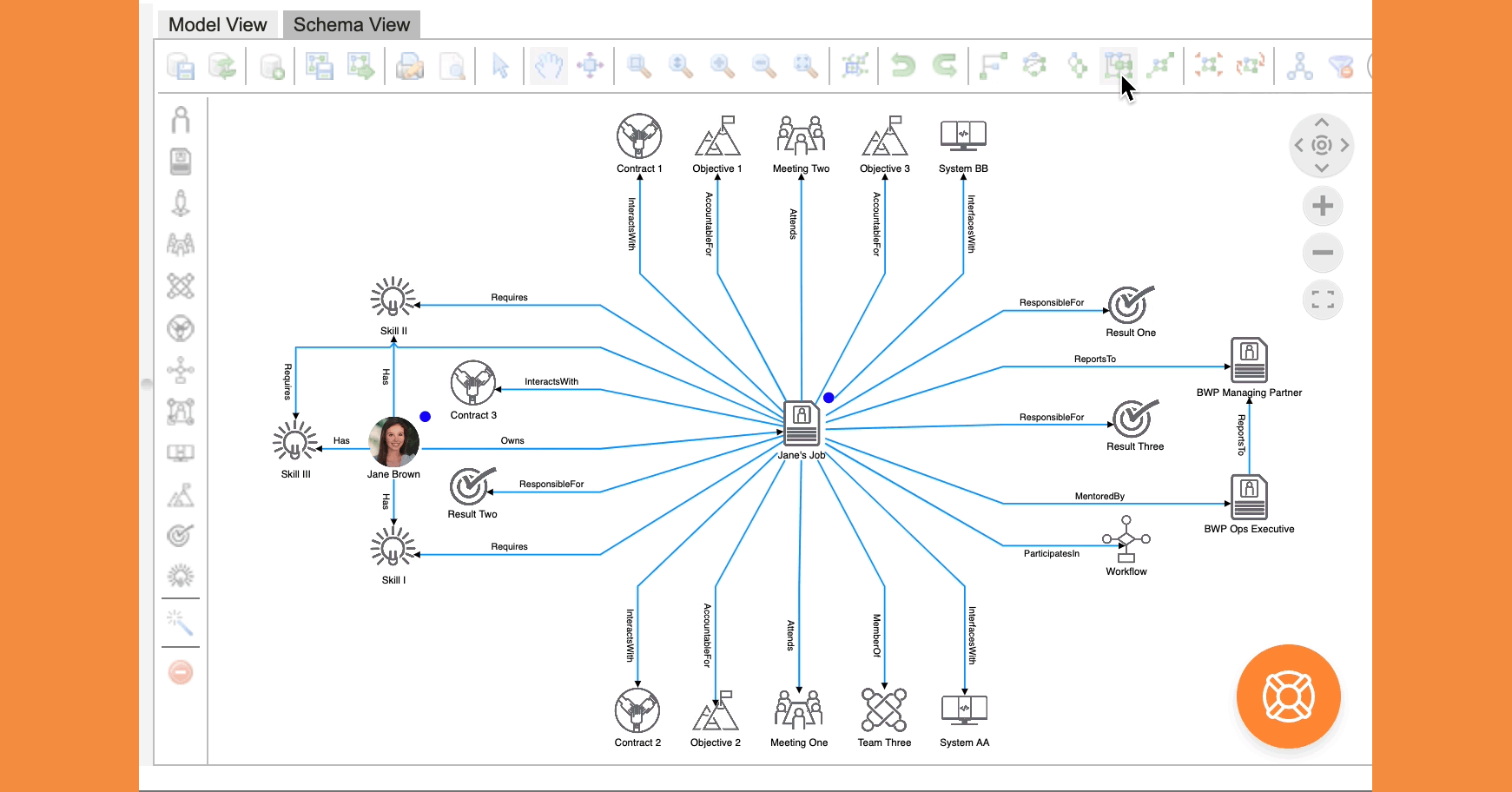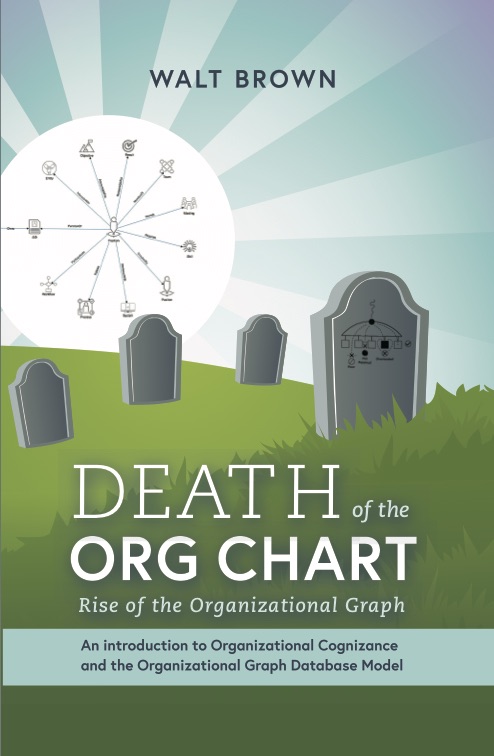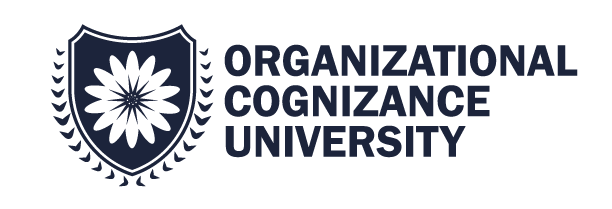The Organizational Cognizance® Knowledge Graph Schema / Model
The model presented below came from our employee engagement work with millennials. We were asking them this yes / no question: Do you understand and embrace what you are accountable for?
They answered with “What do you mean?” So we dove in to unravel the question with them and they came back with a list of 14 things they felt they needed to know in order to able to answer yes to the Accountable question above. Below is the list – it is the backbone of the OCog model.
- I understand the purpose of my Job
- I understand the purpose of my Roles
- I understand who I report to.
- I understand who I turn to for coaching.
- I understand who I am mentored by.
- I know what Teams I am a member of.
- I know what Meetings I attend.
- I know the Entities I am to maintain relationships with.
- I know the Objectives of my Job and Roles
- I know the Key Results for my Job and Roles
- I know what Systems I login to and interface with
- I know what Procedures I follow
- I know what Workflows / Processes I participate in
- I know what Skill are required
From this list we worked backwards to figure out how we comb this information out of an organization, to get the answers to these 14 items.
Once we found a path to the answers, we realized we needed a better way to capture, document, visualize and understand what this data had to tell us, this led to the Org Graph.
That is the history.
Modern Org Structure and Design
The Domed Topped Table Story
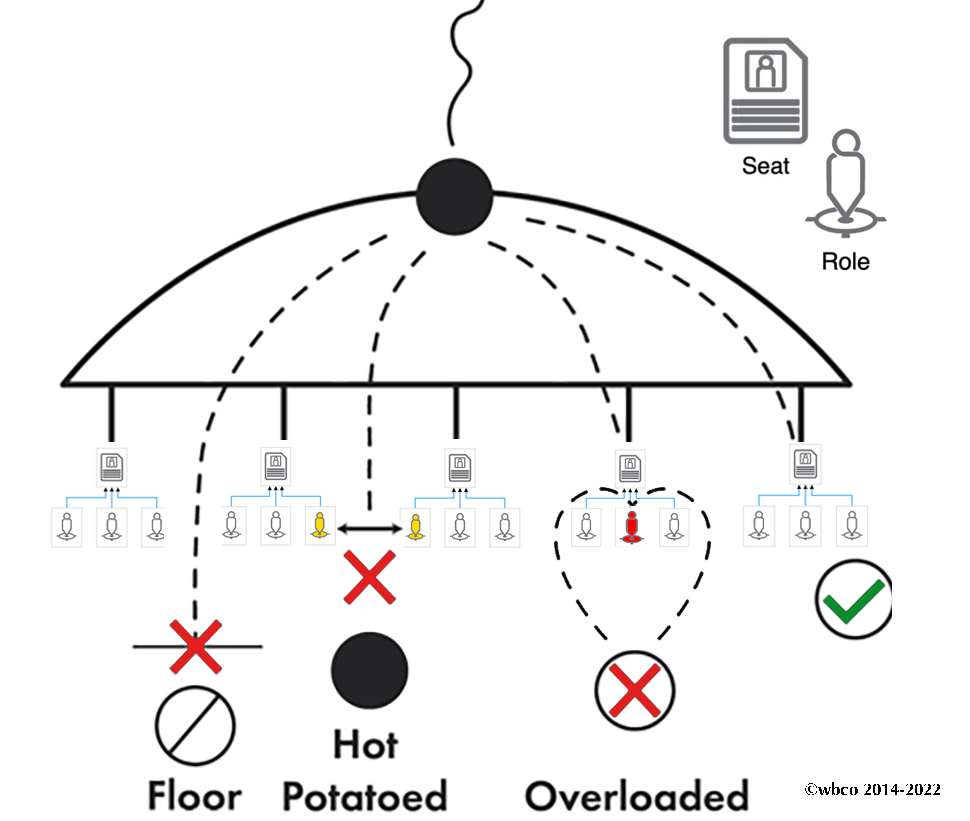
Above is our drawing that captures what you are feeling when it comes to the organizational structure of your company.
Let’s imagine a team gathered around a table, a table with a domed top. Around that table are Jobs/Seats filled by team members. An issue / problem / opportunity that is shaped like a ball-bearing lands on the table.
Question: What is the ball-bearing going to do?
Answer: Well, it is going to roll of course, and what it can’t do is roll to the edge and slip between all of the Roles of each Seat and hit the floor, it can’t get caught between Roles of Seats (aka Jobs) getting hot potatoed back and forth and it can’t land in a Seat and then into a Role that has no capacity, because then it just spills over and hits the floor.
What we want is so much clarity around Seats and Roles in our corporate structure that our ball always goes to the right place, with clear ownership, domain and authority. This is what we are solving, it is the goal.
Unfortunately even the prettiest org chart software will not solve your problem. What is needed is a modern approach an upgraded org chart, what is needed is an org graph.
Bonus, you have probably tried thinking about a matrix organizational structure too. While this is on the right track it also is a 2 dimensional tool in a three dimensional world. Thinking about your company as a matrix is a good practice, more advanced, but it will not get you to the promised land.
Self integrating teams, self integrating matrix organizations, looking at the circular domed topped table from above.
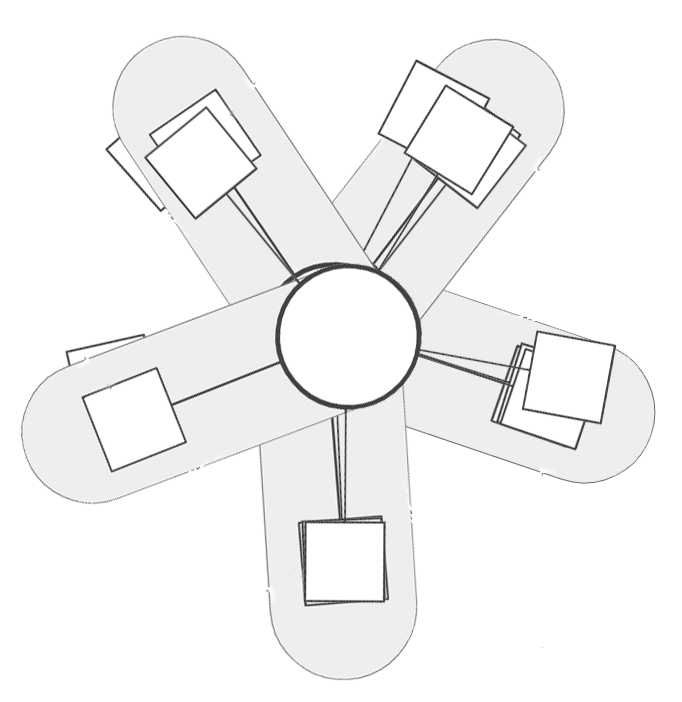
Above is another drawing that captures what you are looking for when it comes to a modern organizational structure and organizational design.
This is the same domed topped table, it is round and we are looking at it from above. The complex reality is this, there are layers and there are overlaps. This is what we are trying to capture and understand – the overlaps in our organizational structure.
Think of the grey areas as domain and authority areas. Out in the grey where there is no overlap, the roles can act independently, on their own. But where there is overlap, we need communication and collaboration. What we are trying to do is to make it super clear when collaboration, integration, team work needs to happen in your organizational design. This can not be captured or seen with an org chart, it can not be imagined with current org structure and design thinking that thinks Jobs, bosses and reports to. No, the reality is this, modern organizations must be thought about in multiple dimensions.
Fact: There really are no single organizational structure “types” any longer.
Search “organizational structure types” and you will see a litanny from the Heirarchial, Functional, Flat, Divisional, Matrix, Team Based, Network, etc. All of these still apply at one time or another inside your corporate structure, all are good examples of types of organizational structures, what we do with an org graph is move beyond an org chart or single structural model to another levels of cognizance, to a solution that combines all of the best thinking into one singularity called the Organizational Cognizance model.
Organizational Cognizance® Model & 14 Pt Checklist™
Below, 7:08 min. Video: An exerpt from a Walt Brown chalk-talk summer lecture describing the OCog Model and 14 Pt. Checklist
From Real World Experiance Solving the Domed Topped Table Scenario
The Organizational Cognizance model was born from the real world experience of our founder Walt Brown and his team. Since selling his 4 companies in 2006 he and the team have worked with over 300 companies across 1,600 full-day retreats doing the gutsy work of getting organized. At around client number 80, 400 days in, the pattern for OCog – the 14 Pt Checklist – surfaced.
“All organizational fear, anxiety and dysfunction resides in unclear structure, unclear accountability and responsibility, in other words, being disorganized.” WB
Getting organized means understanding and documenting who is doing what, why and how espcecially at the Role level.
OGraph® grew out of the Organizational Cognizance work the team was doing with clients as they looked for a better way to capture and visualize this breakthrough solution.
the 14 Point Checklist™ – Hot Potatoes and Gaps
Every employee wants to know the answers to these 14 things. When they have the answers to these 14 questions, the Gaps close and the Hot Potatoes get eaten.
-
- What is the Purpose of my Job?
- What Roles do I fill as part of my Job? What is the Purpose of each Role?
- Who do I report to?
- Who is my Mentor?
- Who do I turn to for Coaching in each of my Roles?
- What Teams am I part of?
- What Meetings will I attend?
- What Entities (clients, projects, contracts, etc.) will I interact with?
- What Core Processes do I participate in?
- What Procedures, Work Instructions, Policies will I follow and/or maintain?
- What Systems do I interface with and need to master?
- What are my Objectives?
- What are my Key Results?
- What Skills or Competencies do I need now and in the future?
We have a saying, The Org Chart is Dead – this does not mean it is actually “dead”, it is just that an Org Chart no longer satisfies the needs of modern day employees. Read Walt Brown’s article here. https://ograph.io/the-org-chart-is-dead
Another Way to Think about the Organizational Cognizance® Knowledge Graph Model and the 14 Point Checklist™
Why? – Who? – How? – What?
Your Employees want to know the answers that lie inside these four areas Why? Who? How? What? This is how the OCog model addresses them.
Why: What is the purpose of my Job and all of the Roles that are associated with my Job? In the OCog model Roles are as important as Jobs – each Job needs a clearly written Purpose Statement and each Role needs a clearly written Purpose Statement. When you know the Purpose you know the Why. With OGraph you simply right click the object and type or paste in the Purpose Statement.
Who: With whom am I interacting? What Teams and Meeting? Who are the Entities I need to maintain a relationship with? Who do I Report To? Who do I turn to for Coaching? Do I have a Mentor, who is it? The OCog model answers these questions, OGraph allows you to visualize them.
How: How a person does a Job or Role is directed by the Work Instructions, Procedures, Policies (WiPPs / SOPs) that are followed, and how these WiPPs fit into the overall workflow is called the Process. OCog pushes us to make these connections and document the WiPPs. When the WiPPs are understood and linked to Roles then we can turn to the flow of work, the Process. Skills are the underlying bedrock and we are now able to see how they connect to our structure. OGraph helps you visualize these connections and see gaps.
What: What are my goals? What constitutes a good job? OKRs – Objectives and Key Results. Normally Objectives connect to Jobs and Key Results (the controlable things) are linked to Roles. When we define these, get them out in the open and link them up, our employees will understand exactly what is is they are shooting for.
We Wrote the Book on Modern Org Design, Org Charts, and Organizational Knowledge Graphs
Our clients have suffered through the same thing you are experiencing now: “How do we capture, update, visualize and interact with the complexity inherent in today’s modern organizational structure?” How do we do organization design and organization structure? How do we bring ourselves to have a modern organiztion design, a modern organiztion structure?
Death Of the Org Chart is a user guide, and facilitation how-to. It is a manual to reference that explains in depth how you convert your org chart into the software and how it ties to the Organizational Cognizance® Model. It includes detailed how-to facilitations and the theory behind OCM and your Org Graph software.
$29.95 Amazon Hardback.
$16.95 Amazon Paperback, $9.99 Kindle
Modern day organizations are more complex than your org chart or employee directory can handle. You need more, OCM is your cognizance framework to vanquish this complexity, OGraph automates your work.
“Cognizance: When an individual can understand and embrace these 14 things about their job, they become organizationally aware. When they can visualize these 14 points with an Org Graph, they become organizationally cognizant.
Awareness is when you smell smoke, cognizance is when you know the smoke you smell is the smoke from the cozy fireplace in the den vs an electrical fire in the wall.”
Walt Brown, OCM Creator, OGraph founder

